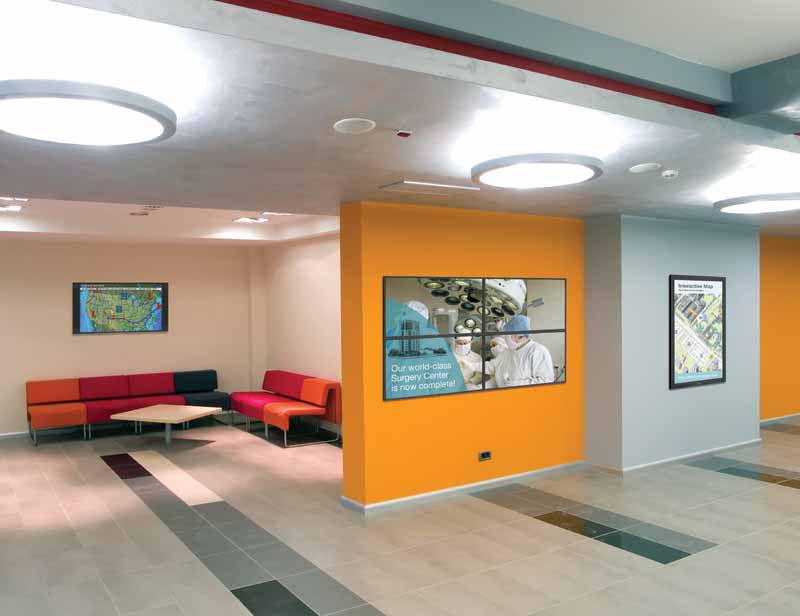
More complex software is needed for networks that combine single screens with video walls.
Photo courtesy NEC Display Solutions
5. Not provisioning for future needs
After an initial digital signage rollout proves successful, it is not unusual to suddenly need to expand from a handful of screens to a deployment of 50 or even 500. With this in mind, it is important to start with a technology platform that (a) will not become obsolete tomorrow and (b) can be scaled up to meet new needs as they arise in the future.
To be sure, some pilot programs only involve a small initial investment in one screen and an entry-level media player for a simple setup, just to demonstrate how digital signage might be used by the given organization. In these cases, the lack of scalability may not be a problem, as there is no intention to deploy a larger-scale network using the same hardware.
Experience suggests digital signage tends to sell itself, however, once that first screen has been put up for everyone in the organization to see. Personnel in other departments and offices begin to consider the potential of the medium to benefit them, too. Soon, they are requesting their own screens.
So, given the prospect of needing to meet increased demand, it generally makes more sense to be prepared from the start with technology that is expandable and not near the end of its useful life. Then, scaling up to a multi-channel network with geographically isolated screens will simply be a matter of adding more ‘subscribers’ to the configuration, with content cloned over the network to appear on displays at multiple sites.
Also, the software for publishing playlists to different screens should be intuitive and time-efficient for users. This is particularly important with digital signage networks at a national or international scale, where support for different time zones, an interface enabling both central and remote content management, media player operation verification and alert reporting functions are all key to ensuring smooth 24-7 operation. Software support for multiple languages may also be necessary, depending on the nature of the organization.
Digital signage should also be scalable in terms of increasing the number of screens and locations without taxing the integrated IT architecture’s overall bandwidth. The software vendor should regularly provide updates to ensure system support for the latest browsers, Secure Sockets Layer (SSL) certificate files for use with Hyper Text Transfer Protocol Secure (HTTPS), social media integration, popular apps and widgets and changes in Internet Protocol television (IPTV) streaming standards.





